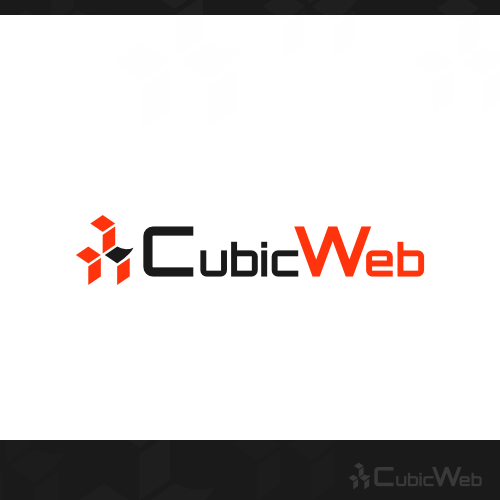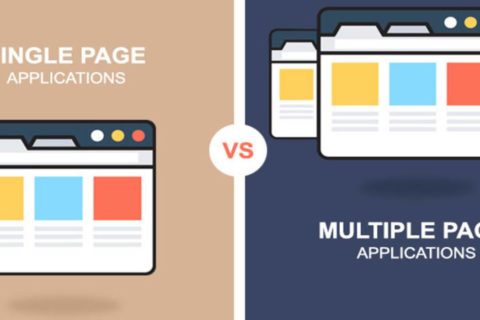Overview
What makes a python programmer’s coding life easier? The answer is very simple it’s the web frameworks. The framework reduces doing repetitive tasks for development, and this allows developers not to concentrate more on routine elements, but they get more time to focus on program logic. As python is one of the leading programming languages, there is no scarcity of frameworks. Different web frameworks have their own advantages as well as drawbacks. Hence, we need to pick the framework depending on the project and on the developer’s choice. There are three main categories of Python frameworks: full, asynchronous, and microframework.
Categories of Python Frameworks:
Full-stack frameworks: These full-stack frameworks address solutions for any developer’s needs. Form generators, form validation, and template layouts usually provide a full-stack framework.
Asynchronous frameworks: A microframework is an asynchronous framework that allows the handling of a wide array of concurrent connections. We use the programming language asyncio library as an Asynchronous framework developed for python.
Microframework: They are lightweight frameworks with no other additional functionality or features such as the abstraction layer of the database, the type validation, and basic tools and libraries. Microframework developers must manually apply a lot of code and additional specifications.
Five python web frameworks
Here are five heavyweight Python web frameworks that come with everything that a developer needs:
CubicWeb :

CubicWeb is licensed to developers under the LGPL to efficiently design web applications with the reuse of components.
It is an object-oriented, reusable, and semantic platform for web applications. The use of abstractions and reusable pieces of code called cubes is emphasized. CubicWeb may be too complex or distinctive for some developers, with the pace and function of implementation lagging behind other Frameworks. Documentation done by CubicWebs author applies to the unconventional method, show how such simple apps can be built, provide API references, also go beyond the specifics.
The cubes are components of the software which feature a diagram (data model), entities, and views. You can create a software application by using your own code and the code of others by combining many cubes and executing their own tasks. CubicWeb’s core features a simple set found in any web app: a data link and storage repository, the web engine for fundamental HTTP request/response and CRUD behavior, and a modelling schema for the modelling of data. We define all these in descriptions of Python classes.
More :
You use a tool similar to the one used by Django to set up and administer instances of CubicWeb. You can programmatically produce HTML output through an integrated templating web frameworks. We can also use a bootstrap HTML platform to include resources for Web UIs. While Python 3 is supported by CubicWeb (since 3.23), the async feature of Python 3 does not appear to be applied. The cubicweb.pyramid module is a complete way to include async and use the platform Pyramid as the webserver and rely on a Pyramid fork using async constructions. The CubicWeb worker cube can also handle asynchronous activities. But right now, something easier is out of control.
You use relation query language (RQL) to collect or exploit persistent data in a CubicWeb app. This is a syntax of the W3C’s SparQL that vaguely follows SQL. The reason behind CubicWeb is: RQL gives a deeply detach type of route to interconnect different data sources. With the many dependencies of CubicWeb, it’s safest to use the pip install to catch all of them. You will also need to manually adjust the local environment in a certain way. This is in contrast to other implementations where all that is required is to run a pipe install or drop the web frameworks code into another subfolder. Or we can use a Docker container to run things.
What are the main features of CubicWeb web frameworks?
- The engine powered by an explicit application data model,
- RQL-like query language called W3C SPARQL,
- a selection+view process for XHTML/XML/JSON/text generation semi-automated,
- A reusable component library that meets the general needs (data model and views);
- the Python programming language’s strength and versatility,
- SQL, LDAP, Subversion, and Mercurial code base reliability for storage backends.
Django:

It has been one of the most widely-used web frameworks for the development of web applications throughout the decade and the transition since Django was first introduced. Django comes with most batteries you need and is better suits than small ones to create larger applications. Django has been in version 1.x for several years. Since Django 2.0 arrived in late 2017, Python 2 was reduced in favor of Python 3.4. We need Python 3.6 or better for Django 3.0, published in December 2019. This provides support for the latest Python web applications asynchronous ASGI norm.
Speed deployment is a vital aspect of Django’s appeal. Speed deployment is a vital aspect of Django’s appeal. Routing, URL parsing, connectivity to databases like ORM, type validation, assault security, and templations are all included in this built-in. For most common web application scenarios, you can find building blocks. For example, we find user management on many websites, so Django provides it as a standard element. Rather than creating your own account management scheme, Django supports these native features with sessions, passwords, log in/logouts, admin permissions, etc. We may use this as standard or expanded to include new cases with limited effort.
More:
Django has sane and safe settings that prevent attacks from your web application. The variable is simply not made whenever a variable is placed in a page template, such as an HTML or JavaScript string. This is unless you expressly identify the variable’s instance as protected. This removes many typical cross-site scripting problems by itself. You can use anything from basic CSRF defense if you want to do the type validation. These are the complete field-by-field validation mechanisms that return feedback on detailed errors.
Django apps are renowned for being highly heavy, full of moving components. Even a basic Django application takes a lot of setups to run. When it comes to building a number of easy REST endpoints, Django is surely overcrowding. Django has its peculiarities as well. For example, We have no callable for page templates. {user.get name()} It is one way to guarantee that Django does not fire models unintentionally at you, but if you are not prepared for it, these restrictions will be hurting. They have to pay the price on results while there are workarounds. Django’s asynchronous views support extends to version 3.0. Unfortunately, in some areas of the Django stack, including ORM, there is still no support for async. However, you can use ASGI or use Django to make full use of async views.
What are the main features Django web frameworks?
- Django is mainly to provide a platform for building web applications that require less time.
- They take protection seriously, helping developers escape a number of popular security mistakes like SQL injection, cross-site scripting, cross-site forgery, etc.
- We can scale Django in design, switching from small to larger applications easily and flexibly.
- It is adaptable in design and can create applications for a variety of domains.
- Django is a platform for open-source mobile apps. It is open to the public free of charge.
Web2py

The main appeal of Web2py is its integrated production web frameworks. You have a web interface to set up an instance of Web2py, basically an online Python program editor, which allows you to set the application components. This generally means that we can create models, views, and controllers; which are defined in Python modules or HTML templates. Developers generally use Web2py to import and expand on their source code. However, Web2py’s developers sell versions that are mostly standalone servers for less advanced users on Windows or macOS. Download, unpack and run one of these versions, and a preconfigured copy of a built-in Web2py local web server is available.
With Bootstrap 4, a web interface for Web2py has been developed, making it easy to use and to look at. The browser editor is no replacement for a complete IDE, but it is equipped with helpful supports such as line count and Python syntax. In Web2py, the data abstraction framework operates a little differently than Django’s ORM and other ORMs it inspires. These frameworks describe models by using the Python classes, while Web2py uses building functions like define table for models.
More:
The capacity in Web2py to create a model diagram allows you to see the relationship between your model and the other model is very usefully associating with the database feature. However, to allow this functionality, you must install the PyGraphviz library. Web2py provides several more components of technical quality: internationalization, various caching mechanisms, access management, permission control, and even front-end effects via integrated jQuery and AJAX support. There are also hooks for external and internal middleware, but you can’t replace key Web2py functionality by middleware. However, python’s async syntax in Web2py has yet to be explicitly applied, although there is a scheduler to manage long-term activities.
What are the main features of Web2py web frameworks?
- There are no conditions for setup and configuration.
- Windows, Mac, Linux/Unix, Google App Engine, Amazon EC2, and almost all types of Python 2.5/2.6/2.7 or Java+Python Web hosting are available.
- Multiple protocols readability
- Data protection prevents Cross-Site Scripting, Inject Flaws, and Malicious File Execution bugs.
Weppy

Weppy sounds like the halfway point between Flask’s minimal simplicity and Django’s integrity. They come with several features found in Django, including data layers and authentication while creating a Weppy app that has the simplicity of Flash. It is, therefore, suitable for applications that range from very easy to complex. Weppy code looks much like Flask or Bottle Code at first sight. By adding these functions, Weppy compares them with these minor implementations, which will be adding as a plugin. There is, for example, no integrated ORM or data processing system on either Flask or Bottle.
Weppy has an ORM, albeit one based on the pyDAL project instead of SQLAlchemy, which is far more common.Weppy facilitates also the relocation of schemes, which Django supports in its ORM. Although Weppy has an extension mechanism, the number of officially accepted add-ons is narrower than the Flask extension catalogue. By adding these functions, Weppy compares them with these minor implementations, which are only added as a plugin. We also use lighter framework systems such as Weppy for building RESTful APIs, and Weppy has convenient features to do this.
More:
At Weppy the support of internationalization is also a heavyweight platform function. Template strings can be converted into local program files, which are basic Python dictionaries. You may also choose the language by scanning the browser application or by linking a translation to a certain path.
Weppy’s long-term plans provide support for async and sockets as first-class, lower-level entities. Weppy is planning to include these features in version 2.0, and Python 3.7 or better in all subsequent Weppy releases will be needed.
What are the main features of Weppy web frameworks?
- Writing models and relationships are concise and quick.
- Instead of the basic system, you can spend more time on your items.
- In contrast to many frameworks, Weppy will not give you a new template language with a different syntax and logic: that’s not to waste time.
- Weppy has a powerful query interface that allows you to only add Python language.
Bottom Line
You need a platform or application to code to start developing with python. Bear in mind the scale and difficulty of your request or project when selecting a structure. We hope that this article helped you to understand about the four most important python frameworks.
If you find this blog interesting, please check our rest blogs too. Please browse our website and check out our services and technologies we use. If you have any queries, then please do contact us. We feel happy to hear from you!




